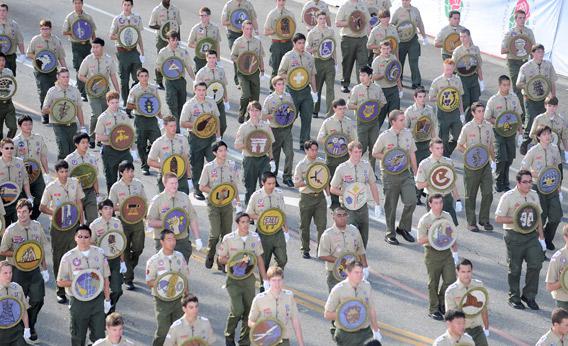The Boy Scouts of America is set to release internal files about suspected pedophiles within the organization, pursuant to a recent judicial order. The group has already paid millions to settle child abuse claims, and the upcoming disclosures could lead to even more liability. How are the Scouts going to pay for all this?
Insurance and cash reserves. The Boy Scouts have settled dozens of molestation claims in the last couple of years. If the incident occurred in the 1980s or earlier, the organization usually pays out of its cash reserves, which are substantial. As of 2009, the Boy Scouts of America maintained a $65 million account just to pay settlements and jury awards, according to a forensic accountant who testified against the organization in a 2010 trial. The BSA’s total unrestricted assets—money that isn’t earmarked for any specific purpose—approached a billion dollars at that time, and the national organization’s annual revenues top $300 million. Those figures don’t include the assets of local councils, which have their own cash and land holdings, usually in the form of summer camps. The Scouts have also split molestation settlement costs with organizations that sponsor scout troops. For example, the Church of Jesus Christ of Latter-day Saints and the United Methodist Church, the two largest sponsors of the Boy Scouts, have been forced to pay for Scout sex abuse.
Insurance covers some of the costs, especially for more recent incidents of sex abuse. During the 1980s, there was a flurry of litigation over whether comprehensive insurance plans covered damages for sexual abuse that occurred in churches and youth organizations. The disputes centered around whether molestation or rape were “occurrences,” in the dusty parlance of insurance contracts. Courts reached different conclusions, and insurance companies responded by expressly excluding sexual abuse from their general plans and offering separate molestation policies. The plans have become so common that the New York City Housing Authority requires contractors that offer youth programs to carry what the New York Daily News colorfully refers to as “perv insurance.” When insurance is available, the Boy Scouts typically pay a deductible out of their reserves, and the insurer pays the rest. (Deductibles for molestation insurance often exceed $1 million, although the details of the Boy Scouts’ policy aren’t public.) An insurance company representative actively participates in settlement negotiations.
The Boy Scouts still appear to have a serious problem with sex abuse, but the advent of molestation insurance has probably cut down the number of cases. An insurer won’t offer coverage unless the organization takes a series of prescribed steps to reduce the risk of molestation, such as background checks for volunteers. Failure to adhere to the insurer’s standard could result in a loss of coverage.
Got a question about today’s news? Ask the Explainer.
Explainer thanks Kelly Clark of O’Donnell Clark & Crew LLP.
